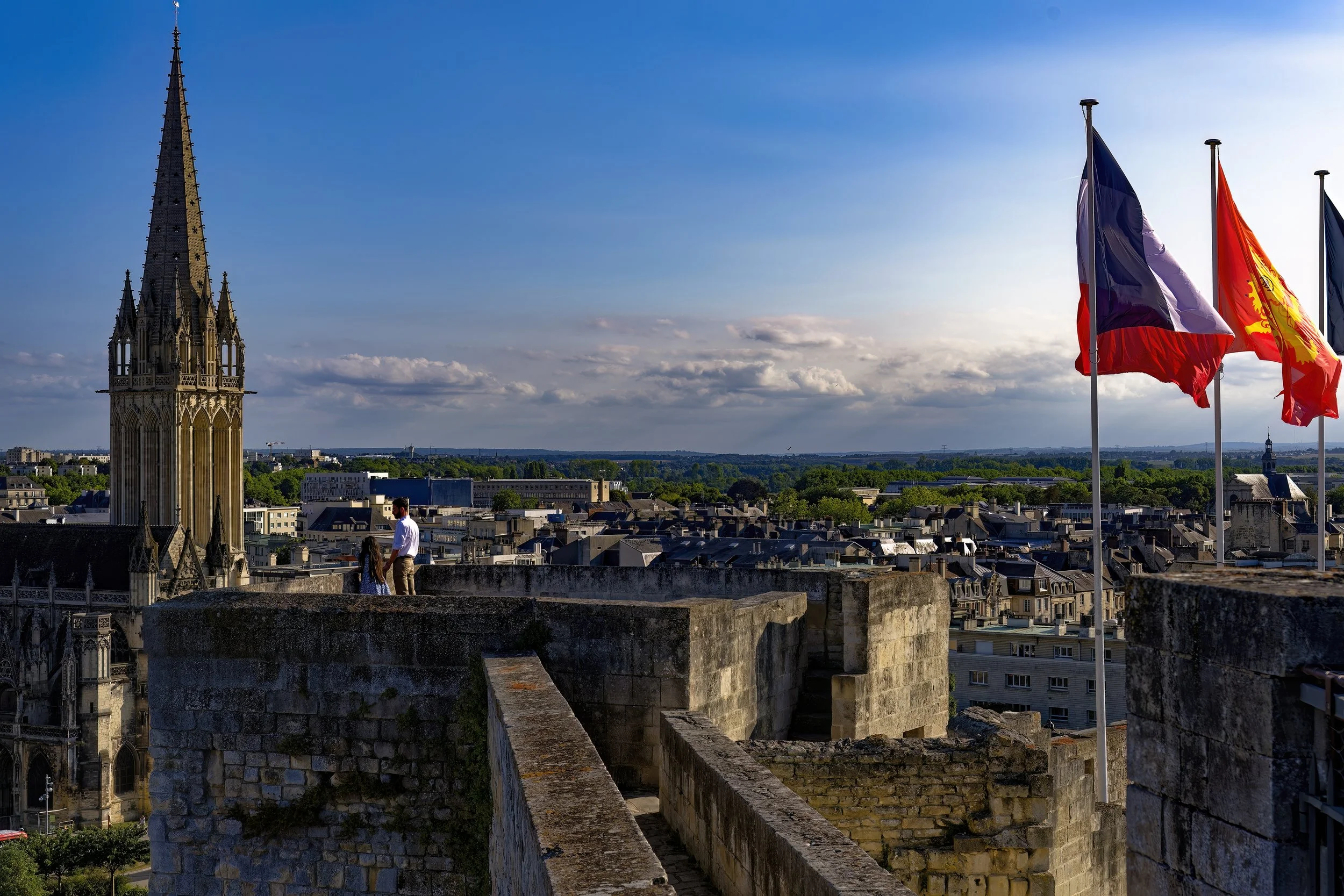A Tour of Normandy
Breaching the Atlantic Wall started the night before D-Day, with elements of the US Army’s 82nd and 101st Airborne Divisions landing inland from Utah Beach near the site of the Airborne Museum in Sainte-Mère-Église, the first French city liberated by the Allies. Despite being scattered all over the Contentin Peninsula, the soldiers quickly coalesced into ad-hoc fighting units, eventually reforming their operational structure, capturing their objectives and fending off fierce German resistance and counter attacks.
The feared German 8.8cm Flak 18/36/37/41 gun. The gun was designated Flugabwehrkanone (aircraft defense cannon), typically shortened to just “Flak.” The Allies called them “eighty-eights,” for the 88mm (8.8cm) barrel diameter. Despite being designed as an anti-aircraft cannon, the versatile and reliable 88 went on to be used as artillery against Allied forces landing in Normandy, as well as a direct-fire anti-tank gun, eventually finding its way onto equally feared German Panther and Tiger heavy tanks.
A memorial plaque inside a destroyed German shore battery at Pointe du Hoc honoring fallen soldiers of the US Army 2nd Ranger Battalion, 1st Infantry Division (“The Big Red One”). Rangers scaled the 100 foot cliff wall to reach the German guns at Pointe du Hoc against fierce resistance only to find the guns had long since been moved and replaced by tree trunks. Still, taking the location was essential for the success of D-Day. Despite suffering a 60% casualty rate, the Rangers took the German position, wedged between Utah and Omaha Beaches, and held it until D-Day plus one (June 7, 1944), when they were finally reinforced.
Once the Normandy beach head had been established, the Allies quickly constructed temporary ports or Mulberry Harbors on the coast of Normandy, the primary being “Mulberry B” at Arromanches (“Mulberry A” at Vierville-sur-Mer was destroyed by a storm shortly after construction). To win a battle requires bravery, grit, and determination. To sustain battlefield victories requires effective logistics. Along with Cherbourg and other assorted smaller ports and beaches along the coast of Normandy, Mulberry B became the focal point for moving the massive Allied war machine onto the European continent.
The castle ramparts around the city of Caen are amongst the few old buildings that survived WWII. Allied bombing campaigns after D-Day, intended to loosen German resistance and allow General Sir Bernard Law Montgomery’s 21st Army Group to take the city, destroyed almost all of the old buildings and killed thousands of French civilians. Monty would eventually take Caen in August 1944, suffering significant casualties and more than a little pointed criticism from colleagues and historians. With concurrent advances by General George Patton’s newly formed US 3rd Army and with Caen secured, German armor would later be trapped and routed at Falaise, allowing Patton to break out from the Normandy hedgerows and begin his mad dash to Berlin.
The Allied naval and air bombardment that preceded the landings on D-Day were sadly ineffective at Omaha Beach. Low clouds obscured the target and much of the German defenses remained intact when elements of the 1st Infantry Division came ashore June 6, 1944. Casualties were exceptionally high, reaching upwards of 30% within the first hour alone. Exact casualty figures are unknown, but range as high as 5000 to 6000 killed, wounded, or missing in a single day’s action. Despite these heavy losses, US infantrymen did establish a beach head.
The bodies of 9,388 of those killed in US service during D-Day operations are interred at the American Cemetery at Omaha Beach. Of these, 307 graves are marked “HERE RESTS IN HONORED GLORY A COMRADE IN ARMS KNOWN BUT TO GOD.”







